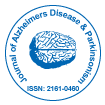Unsere Gruppe organisiert über 3000 globale Konferenzreihen Jährliche Veranstaltungen in den USA, Europa und anderen Ländern. Asien mit Unterstützung von 1000 weiteren wissenschaftlichen Gesellschaften und veröffentlicht über 700 Open Access Zeitschriften, die über 50.000 bedeutende Persönlichkeiten und renommierte Wissenschaftler als Redaktionsmitglieder enthalten.
Open-Access-Zeitschriften gewinnen mehr Leser und Zitierungen
700 Zeitschriften und 15.000.000 Leser Jede Zeitschrift erhält mehr als 25.000 Leser
Indiziert in
- Index Copernicus
- Google Scholar
- Sherpa Romeo
- Öffnen Sie das J-Tor
- Genamics JournalSeek
- Akademische Schlüssel
- JournalTOCs
- Nationale Wissensinfrastruktur Chinas (CNKI)
- Elektronische Zeitschriftenbibliothek
- RefSeek
- Hamdard-Universität
- EBSCO AZ
- OCLC – WorldCat
- SWB Online-Katalog
- Virtuelle Bibliothek für Biologie (vifabio)
- Publons
- Genfer Stiftung für medizinische Ausbildung und Forschung
- Euro-Pub
- ICMJE
Nützliche Links
Open-Access-Zeitschriften
Teile diese Seite
Abstrakt
Preliminary Set Theory-Type Analysis of Proteins Associated With Parkinson's Disease
Paul Whitesman
In an attempt to create a model of Parkinson’s disease (PD) eighty-three proteins were extracted from the Swiss- Prot protein database that had some casual mention of PD. These were split up into various subsets of proteins of which three are focused on here: PARK, made up of proteins that had some indication that polymorphisms in the protein might increase a person’s susceptibility to develop PD; MITOCHOND, proteins which had some association with the mitochondria; and MT-C1D, proteins that were implicated in mitochondrial complex 1 deficiency. The PARK subset had 21 out of 83 proteins (21/83); MITOCHOND 33 out of 83 proteins (33/83); and MT-C1D 17 out of 83 proteins (17/83). The results could be used to build up a basic model of PD creating phenotypes based on sets of proteins. The main phenotypes established here are; non-mitochondrial PD (50/83) and mitochondrial PD (33/83). Further division is possible dependant on whether proteins have polymorphisms which increase susceptibility to develop PD. MT-C1D seems to be independent of the PARK set. This is a very simplistic attempt at trying to model Parkinson’s disease at the proteomic level and will need further work to build up the more complex and realistic PD proteomic disease model.
Zeitschriften nach Themen
- Allgemeine Wissenschaft
- Biochemie
- Chemie
- Genetik und Molekularbiologie
- Geologie und Geowissenschaften
- Immunologie und Mikrobiologie
- Klinische Wissenschaften
- Krankenpflege und Gesundheitsfürsorge
- Landwirtschaft und Aquakultur
- Lebensmittel & Ernährung
- Maschinenbau
- Materialwissenschaften
- Medizinische Wissenschaften
- Pharmazeutische Wissenschaften
- Physik
- Sozial- und Politikwissenschaften
- Umweltwissenschaften
- Veterinärwissenschaften
Klinische und medizinische Fachzeitschriften
- Anästhesiologie
- Augenheilkunde
- Betrieb
- Dermatologie
- Diabetes und Endokrinologie
- Gastroenterologie
- Genetik
- Gesundheitspflege
- Immunologie
- Infektionskrankheiten
- Kardiologie
- Klinische Forschung
- Medizin
- Mikrobiologie
- Molekularbiologie
- Neurologie
- Onkologie
- Pädiatrie
- Pathologie
- Pflege
- Toxikologie
- Zahnheilkunde

 English
English  Spanish
Spanish  Chinese
Chinese  Russian
Russian  French
French  Japanese
Japanese  Portuguese
Portuguese  Hindi
Hindi